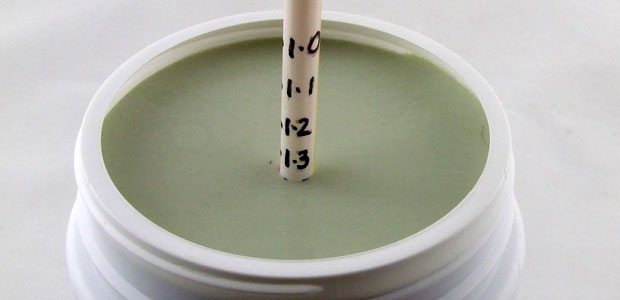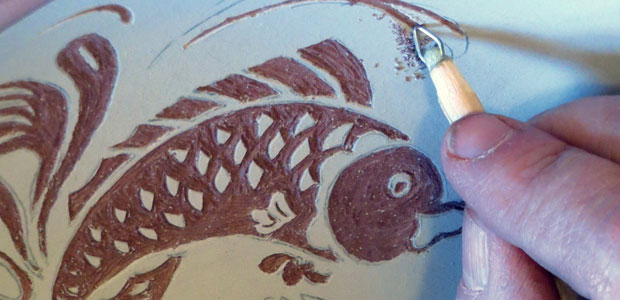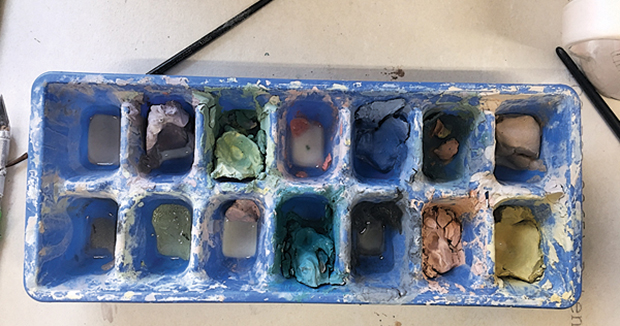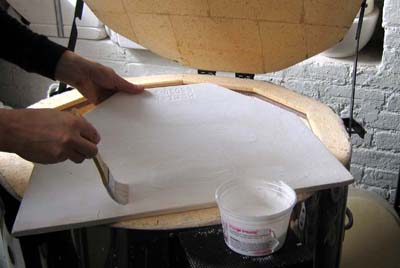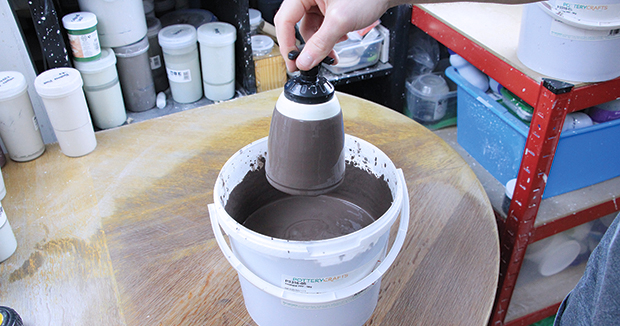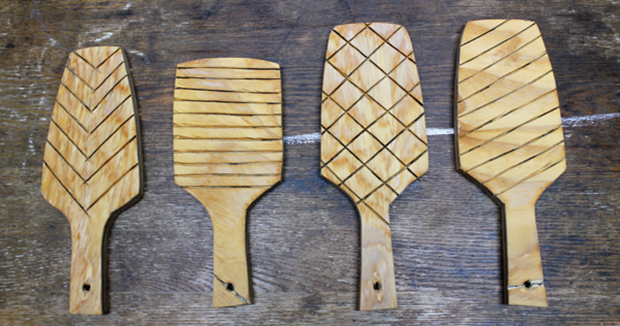
 There are many ways to make texture on pottery, and making custom clay texture tools is great because it really personalizes your work. We have posts in the Ceramic Arts Network archives on making pottery texture boards for slab building and making clay texture rollers. But those are clay texture tools for handbuilding primarily.
There are many ways to make texture on pottery, and making custom clay texture tools is great because it really personalizes your work. We have posts in the Ceramic Arts Network archives on making pottery texture boards for slab building and making clay texture rollers. But those are clay texture tools for handbuilding primarily.
Today, we are sharing a clay texture tool for freshly thrown work. In this post, an excerpt from the Pottery Making Illustrated archive, Matthew Krousey explains how he makes pottery texture paddles from scrap wood with few tools.
I have always admired images of ancient vessels from Japan and Korea that were constructed and decorated using paddles. Wanting to diversify my approach to decorating my own work, I recently started using wooden paddles with various geometric patterns
carved into the surface. Removing myself from my usual multi-step process of layering and illustrating with glazes, this method gives me the opportunity to work simply with the raw clay. After testing various clays bodies, I found that a plastic porcelain body with a smooth buttery surface was most suited to paddling.
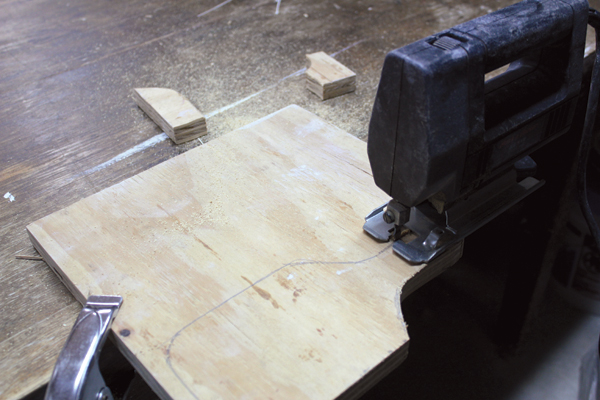
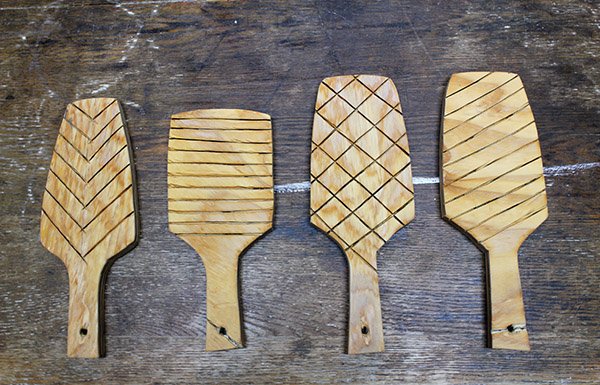
Cutting Paddles and Patterns
Tools needed to construct the paddles include: a jigsaw, a Dremel rotary tool with a cutting bit, scrap wood, a pencil, and paper. For wood, I used ½-inch-thick scrap plywood (any scrap will do) leftover from building shelves and bats. I like the rough-sided plywood because of the depth it adds as a subtext to the patterns carved into the paddles.

To make a simple stencil, fold a piece of paper in half and draw an outline of a paddle that is sized to suit your pots and a handle that will fit nicely in your hands. Trace the cutout of the paddle onto the wood and use a jigsaw to cut it out (1). Finally, use a Dremel tool equipped with a cutting bit to carve out a pattern.
The Dremel is a tool I always have handy in my studio because of its versatility; for this purpose, I like the roughness and inconsistencies I can achieve in the wood surfaces by cutting freehand. This translates to a more unique and rustic pattern on the surface of the pot. The geometric patterns I’ve chosen are a reflection of old wire farm fencing (2). These images have nostalgic value to me as they invoke memories from my childhood. To avoid distortion especially in smaller pots, brace the interior of the pot with your fingers when making contact with the paddle (3).

